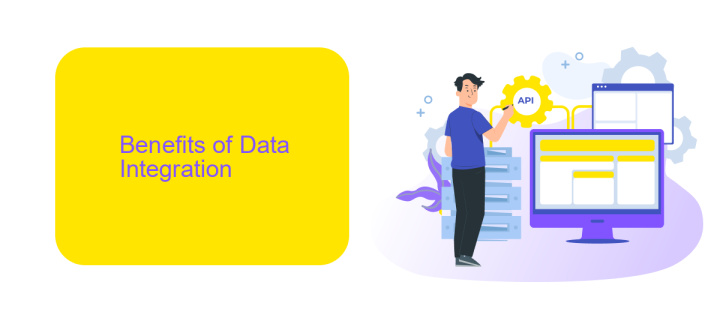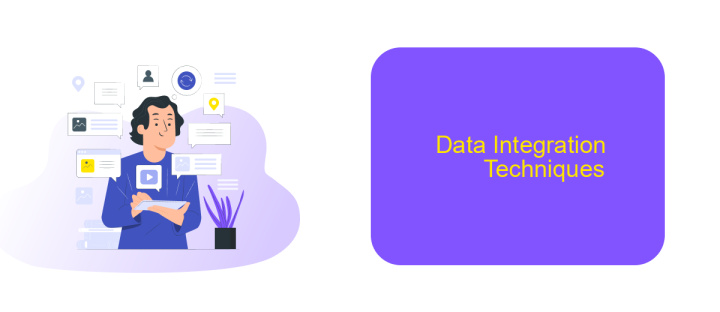Data Integration in DBMS
Data integration in Database Management Systems (DBMS) is a critical process that combines data from different sources to provide a unified view. This integration is essential for organizations to ensure data consistency, improve decision-making, and enhance operational efficiency. By leveraging data integration techniques, businesses can streamline workflows, reduce redundancy, and achieve a comprehensive understanding of their data landscape.
Introduction
Data integration in Database Management Systems (DBMS) is a critical process that ensures seamless connectivity and consistency across diverse data sources. As organizations grow, they encounter multiple databases, applications, and data formats that need to be unified for efficient data management and decision-making. Effective data integration helps in reducing data silos, improving data quality, and enabling comprehensive data analysis.
- Consolidation of disparate data sources
- Real-time data synchronization
- Enhancement of data quality and consistency
- Facilitation of comprehensive analytics
Modern tools and services like ApiX-Drive play a significant role in simplifying data integration processes. ApiX-Drive offers a user-friendly platform for automating data flows between various applications and databases, ensuring that data is always up-to-date and accessible. By leveraging such services, organizations can streamline their data integration efforts, reduce manual intervention, and focus on deriving actionable insights from their unified data.
Benefits of Data Integration

Data integration in DBMS offers numerous benefits, starting with enhanced data accessibility. By consolidating data from disparate sources into a unified system, organizations can ensure that all stakeholders have access to accurate, real-time information. This streamlined access facilitates better decision-making, as users can rely on a single source of truth rather than navigating multiple, potentially conflicting data sets. Additionally, integrated data systems help in eliminating redundancies and inconsistencies, thereby improving data quality and reliability.
Another significant advantage of data integration is operational efficiency. Integrated systems reduce the time and effort required to manage and analyze data, allowing staff to focus on more strategic tasks. Tools like ApiX-Drive can automate the integration process, connecting various applications and databases seamlessly. This automation not only saves time but also minimizes the risk of human error, ensuring that data flows smoothly and accurately across the organization. Ultimately, data integration supports a more agile and responsive business environment, enabling quicker adaptation to market changes and customer needs.
Challenges of Data Integration

Data integration in DBMS presents several challenges that can complicate the process and affect data quality. These challenges arise from various factors, including data heterogeneity, data volume, and the complexity of integration processes.
- Data Heterogeneity: Different data sources often use different formats, schemas, and structures, making it challenging to create a unified view.
- Data Volume: The sheer volume of data that needs to be integrated can overwhelm systems, leading to performance issues.
- Data Quality: Ensuring data accuracy, consistency, and completeness across multiple sources is crucial but difficult to achieve.
- Real-time Integration: Keeping data synchronized in real-time can be technically demanding and resource-intensive.
- Security and Compliance: Ensuring that data integration processes comply with regulatory requirements and maintain data security is a significant concern.
One effective way to tackle these challenges is by using specialized integration services like ApiX-Drive. ApiX-Drive simplifies the integration process by providing tools to connect various data sources seamlessly, ensuring data consistency and real-time synchronization. By leveraging such services, organizations can overcome the complexities of data integration and achieve a more efficient and reliable data management system.
Data Integration Techniques

Data integration in DBMS involves combining data from different sources to provide a unified view. This process is essential for businesses that need to analyze data from multiple databases, applications, or systems. Effective data integration ensures consistency, accuracy, and accessibility of data across the organization.
There are several techniques used in data integration, each with its own advantages and applications. These techniques help streamline the process and ensure that data is properly aligned and usable.
- ETL (Extract, Transform, Load): This technique involves extracting data from various sources, transforming it into a suitable format, and loading it into a target database.
- Data Virtualization: This approach allows users to access and manipulate data without needing to know its physical location or format.
- API Integration: Services like ApiX-Drive facilitate seamless integration by connecting different applications and automating data transfer between them.
Choosing the right data integration technique depends on the specific needs and infrastructure of the organization. Tools like ApiX-Drive can simplify the integration process, making it easier to manage and synchronize data across various platforms.


Conclusion
In conclusion, data integration in DBMS is a critical aspect for organizations aiming to leverage their data assets effectively. Seamless integration ensures that disparate data sources can be combined and analyzed to provide comprehensive insights, driving better decision-making and operational efficiency. The use of advanced tools and technologies, such as ETL processes, APIs, and middleware, plays a pivotal role in achieving robust data integration strategies.
Moreover, services like ApiX-Drive significantly simplify the integration process by offering automated workflows and seamless connectivity between various applications and databases. These platforms not only reduce the complexity and time required for integration but also enhance data accuracy and consistency. As businesses continue to evolve in the digital age, the importance of efficient data integration in DBMS will only grow, making it imperative for organizations to invest in reliable integration solutions.
FAQ
What is Data Integration in DBMS?
Why is Data Integration important?
What are the common challenges in Data Integration?
How can automation tools help in Data Integration?
What are the key components of a Data Integration system?
Apix-Drive is a simple and efficient system connector that will help you automate routine tasks and optimize business processes. You can save time and money, direct these resources to more important purposes. Test ApiX-Drive and make sure that this tool will relieve your employees and after 5 minutes of settings your business will start working faster.

